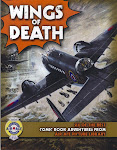"Barbara C. Freeman is a gentle writer, with a particular appeal to
girls. She makes no great demands of her readers, but does provide good
entertainment. Anyone wanting easy, fluent, romantic stories would do
well to consider her work." So wrote Felicity Trottman in Twentieth-Century Children's Writers.
Freeman was both a writer and artist, starting out primarily as an
illustrator. "I write, I suppose, chiefly because I enjoy writing," she
later said. "I like living in two worlds: the one I was born into and
the other (which becomes entirely real) which I write about. I'm deeply
interested in the way ordinary people lived in the past and the way in
which the past thrusts into the present. I believe that most writers
find that their characters develop lives of their own and sometimes take
charge of both conversations and plots. This, for me, is pure delight,
and I allow my people all the freedom that is possible.
"At art school I was trained to observe details of every kind, and it is
a habit that one never grows out of. Details, especially those of the
past, fascinate me."
Barbara Constance Freeman was born in Ealing, Middlesex, on 29 November
1906, the daughter of writer and secondhand bookseller William Freeman
and his wife Lucy Constance Freeman (nee Rimmington), who were
married in 1905. She studied at the Tiffin Girls' School,
Kingston-upon-Thames and at Kingston School of Art.
Freeman began working as a painter with Green & Abbott, a West End
wallpaper studio (1926-27). From there she turned freelance, often
working on annuals. She specialised as an artist of fairy tales,
although in a realistic style with fantastic elements. She was often
called upon to illustrate classic stories the Brothers Grimm and Hans
Christian Andersen. She also produced illustrations for The Children's Encyclopedia.
As television grew and the number of annuals and entertainments for
children slowed in the 1950s, Freeman turned to writing her own
stories, beginning in 1956. He first books, Timi, about a shy griffin taken in by a village baker, and Two-Thumb Thomas, were published in 1961. She also contributed to comics aimed at young children, notably Jack & Jill Annual and Playhour and its annual.
Her work was exhibited at the Heritage Centre, Kingston-upon-Thames Museum, in 1989.
Since her early childhood, she lived in a mid-Victorian house with a
large garden, from which she drew much of her inspiration. She died on
6 May 1999.
A collection of her papers is held by the de Grummond Children's Literature Collection at The University of Southern Mississippi. These include typescripts, illustrations and sketches for ten titles, proofs for various books and some unpublished material.
PUBLICATIONS
Timi. London, Faber, 1961; New York, Grosset and Dunlap, 1970.
Two-Thumb Thomas. London, Faber, 1961.
A Book by Georgina. London, Faber, 1962; New York, Norton, 1968.
Broom-Adelaide. London, Faber, 1963; Boston, Little Brown, 1965.
The Name on the Glass. London, Faber, 1964; New York, Norton, 1966.
Lucinda. London, Faber, 1965; New York, Norton, 1967.
Tobias. London, Faber, 1967.
The Forgotten Theatre. London, Faber, 1967.
The Other Face. London, Macmillan, 1975; New York, Dutton, 1976.
A Haunting Air. London, Macmillan, 1976; New York, Dutton, 1977.
A Pocket of Silence. London, Macmillan, 1977; New York, Dutton, 1978.
The Summer Travellers. London, Macmillan, 1978.
Snow in the Maze. London, Macmillan, 1979.
Clemency in the Moonlight. London, Macmillan, 1981.
(* Images © Look and Learn Ltd.)
Monday, March 06, 2017
Subscribe to:
Post Comments (Atom)




























































No comments:
Post a Comment